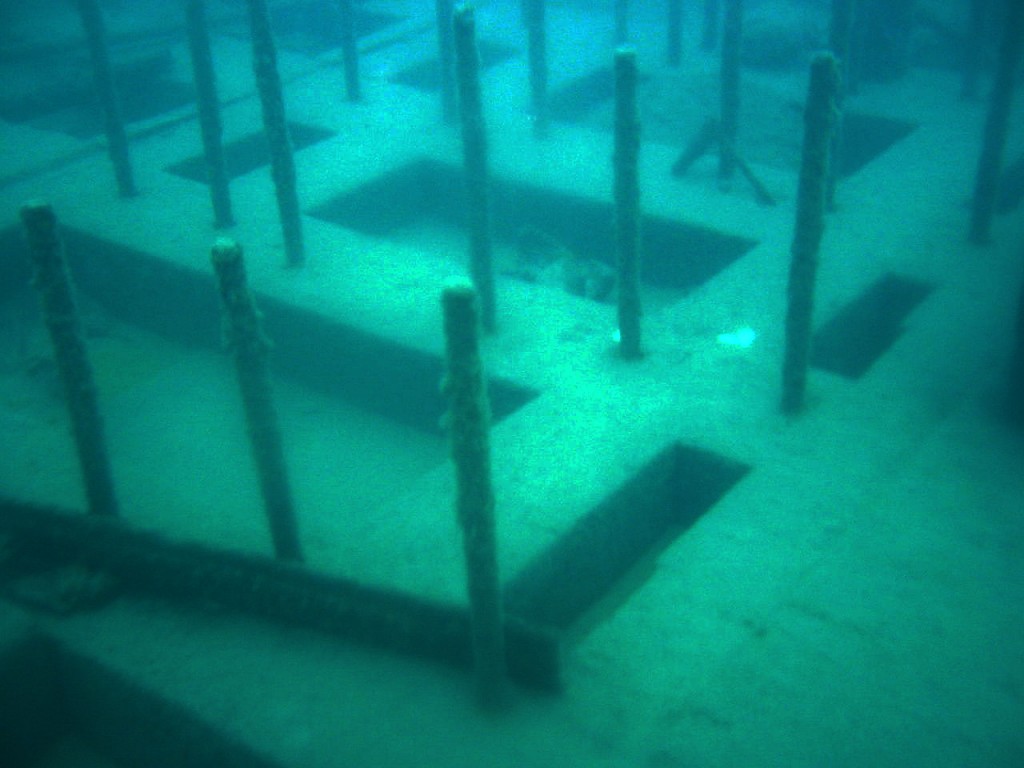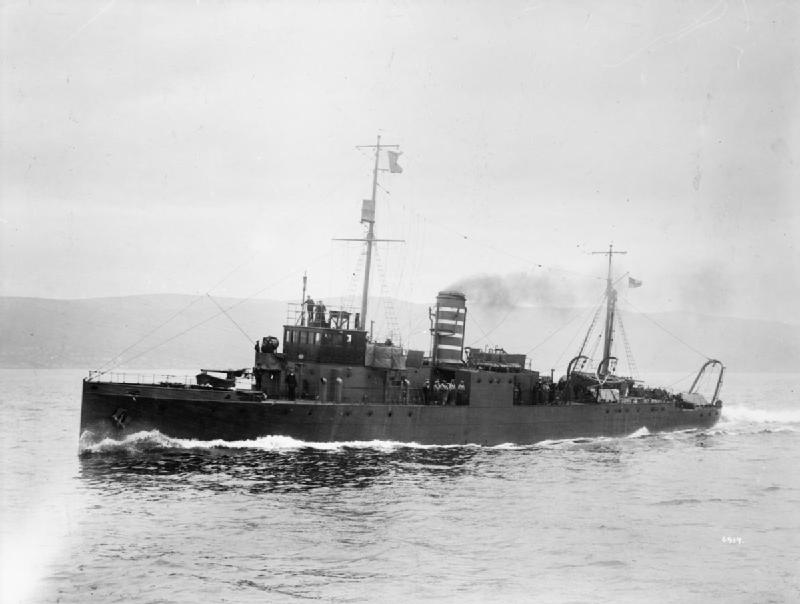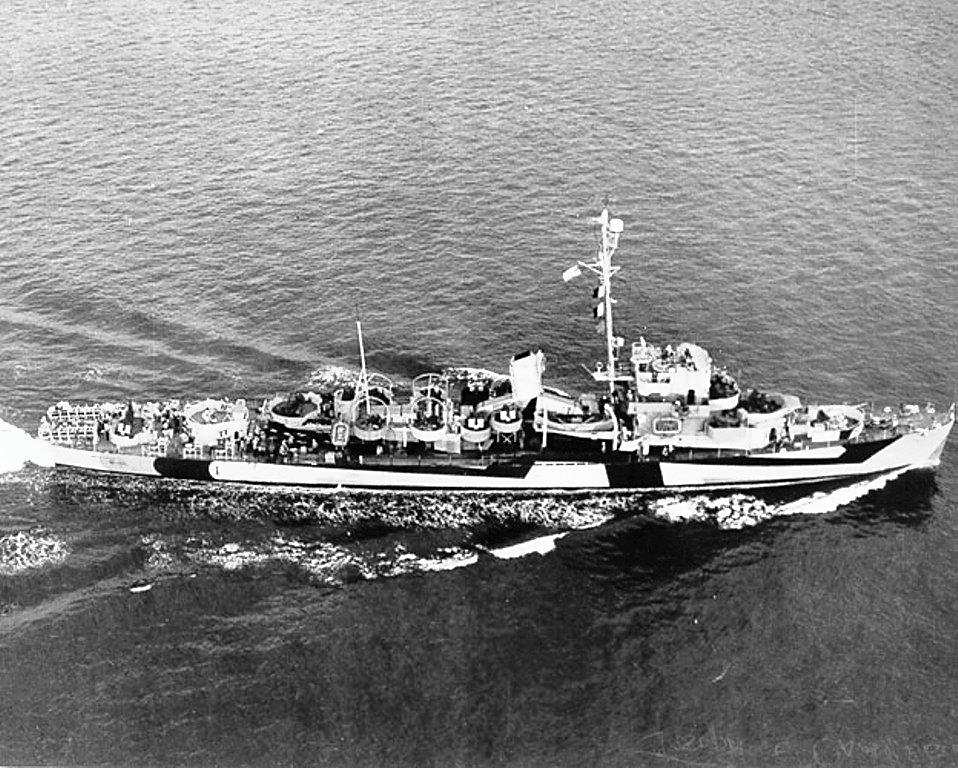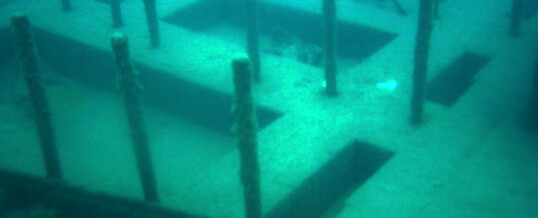
For those who like easy to get to wrecks in relatively clear water, the wreck of the Hesper sunk in Lake Superior in 1905 might be just their thing. For me, I am more interested in the British snow Success, which was sunk in 1761 in the muddy waters of Rebellion Roads in Charleston Harbor, with a treasure said to now be worth between 25 and 50 million dollars. If you are reading this in a post, go to http://shipwrecks.com/shipwrecks-of-may-4/ to learn more about some of the many shipwrecks that have occurred on this day over the years.
Today’s Shipwrecks™
May 4
compiled and edited by Dr. E. Lee Spence
1752: The fine, large, ship Bennet Galley, Captain John Wadham, laden with rice, pitch, tar, turpentine, logwood, sarsparilla, etc., which was ready to sail for Cowes, was entirely burned at Buchannan’s Wharf at Charleston, South Carolina, on May 4, 1752. The cargo was largely owned by her captain. What she carried was actually a quite valuable cargo, and, like most vessels of her time, she probably carried money in the form of gold and silver to buy provisions, pay her crew, harbor pilots, dockage, fees and taxes. This area has long since been filled in, so any of her remains are now under an overlay of mud and rubble, but she could one day be excavated.
The Bennet Galley was owned by Captain Wadham and John Preswick, both of London. She was built in Newbury, Massachusetts Bay Colony, in 1751, and was 120 tons with a square stern.
1761: The snow Success, Captain Thomas Clark, bound for Cowes, was “sunk and lost” in Rebellion Roads, Charleston Harbor, South Carolina, during the tornado of May 4, 1761, drowning a boy. Note by ELS: A treasure map, prepared to illustrate research by shipwreck historian Robert Marx, shows the British merchantman Success, bound from Jamaica to London, as having gone down with over a million pounds sterling in gold and silver. Marx says the treasure had been recovered from a Spanish shipwreck in the Caribbean, and estimates the current value of the loot between $25 million and $50 million. It would be very interesting to know the source of his information and the original value of the gold and silver, as none of the contemporary newspaper records that I have seen about her loss make any mention of her carrying any treasure whatsoever. However that does not automatically mean she wasn’t loaded with treasure, as the losses of gold and silver shipments were frequently kept out of the news, but might still be recorded in government and/or insurance documents.
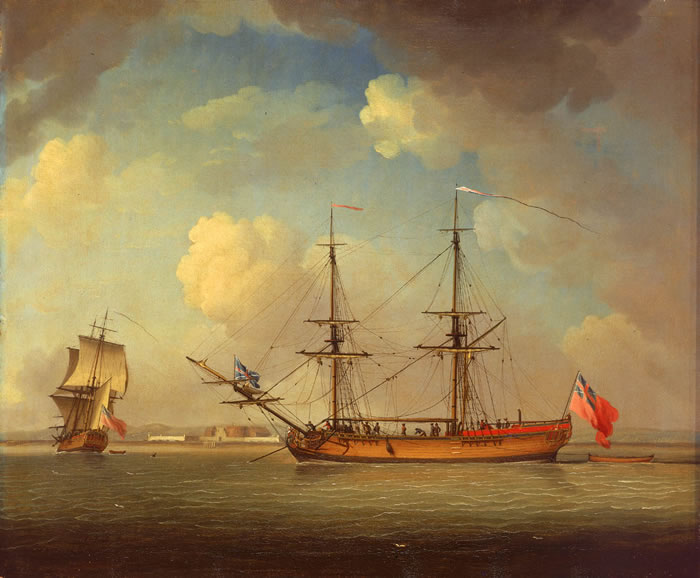
A “snow” is a square-rigged vessel with two masts, complemented by a trysail-mast stepped immediately aft the main mast.
Other ships that suffered in this same May 4, 1761, storm at Charleston were:
• A Bermudian schooner.
• The snow Polly and Betsy, Captain William Muir, sank in the harbor and Robert Kay (the captain’s nephew), and Nathanial Polbill, a passenger, were drowned. The Polly and Betsy, 136 tons, six guns, and ten men, was built at Shoreham, Sussex, in 1752. She was registered at Charleston on December 1, 1759, and was owned by Isaac Holmes; Thomas Ellis; William Ellis; and John Hodsden, all merchants of Charleston.
• The snow Britania, Captain Thomas Wilson, was sunk at Sullivan’s Island and was considered “irrecoverably lost, being bulged.” Despite the expressed pessimism she was later raised and issued a new register at Charleston on July 27, 1761, certifying her for a voyage from Charleston to Bristol.
• The sloop Patty, Captain George Mounsay, from Providence, laden with sugars, fruit, turtle, etc., was overset and sunk in Charleston Harbor. The Patty was afterwards “recovered, but the Cargo all lost.”
• The snow Manchester, Captain Henry Dickenson, was overset, but was righted again.
• The ship Daniel, Captain James Lake, reported for Portsmouth, was “sunk and lost” in Rebellion Roads.
1785: A Dutch brig loaded with salt was reported ashore near Fort Johnson, James Island, South Carolina, in the “South Carolina Gazette and Public Advertiser” of May 4, 1785.
1785: The Dutch East India Company ship Brederode, bound from China to Amsterdam with a valuable cargo, was lost on May 4, 1785, near Cape Agulhas, Africa, with the loss of 12 of her crew of 92.
1817: A schooner, at first only described as supposed to be a coaster, was reported as driven from her anchorage in Five Fathom Hole and went ashore near the Charleston lighthouse on Morris Island, South Carolina, on May 4, 1817. She was later identified as the schooner Rising States, Captain Fish, fourteen hours from Wilmington, North Carolina, with a cargo of tar and salt to Burrows and Webb, owners. No lives were reported lost and it was expected that a portion of the tar would be saved.
1842: On May 4, 1842, the whaling brig Helen, of Newport, 80 days out, in a heavy head sea, opened two of the butt-joints in her hull and filled with water “east of the French Key” (French Cays, Bahamas). The captain and crew were taken off by the wreckers, and landed at Nassau.
1857: On May 4, 1857, Captain M. Lauchlin (or Lanchlan), of the Cayman schooner Stan (or Star), informed Lieutenant Stubbs of His Majesty’s brig Arab that there were “three wrecks of slavers on Man-of-War Key” (Man-of-War Cay, Bahamas?) and also stated that: “on Cotton Keys (Cotton Cay, Bahamas?) he saw a wreck, and the lifeless bodies of about twenty Africans, in quite a perfect state.”
1864: The USS City Belle, Captain Tally, bound to Alexandria, Louisiana with an Ohio regiment, was destroyed by Confederate shell-fire on May 4, 1864, in the Red River, near Snaggy Point, forty miles above Fort Derussy. “Capt. Tally was thrown into the river by the force of the explosion of the boilers occasioned by the bursting of a shell from Rebel guns. • • • Nearly all the hands on the boat were killed as well as a number of soldiers. The boat was drawn to shore and burned by the Rebels.” She was a sidewheel steamer, built in 1855 at Paducah, Kentucky. She was 153 tons, and had a wood hull 179′ in length, 35′ in breadth, and 5′ in depth. Her first home port was Memphis, Tennessee.
1905: On May 4, 1905, the American steamer Hesper was caught in a late spring snowstorm, with a strong 60 miles per hour Nor’easter that drove the ship off its intended course and sent it smashing it into a reef that now marks the southwest end of the harbor in Silver Bay, Lake Superior, Minnesota. She foundered and sank in about 42 feet of water. Captain E.H. Heaton and his crew of 15 stayed aboard until there was no hope of saving her, and launched her 2 lifeboats and pulled away from the steamer just moments before she broke up. The freighter was a total loss. Valued at the time of her loss at $80,000, but only insured for $50,000. She was built at Cleveland, Ohio in 1890. She was 2,105 gross tons, 1,570 net tons, 250.3 feet in length, 41.6 feet in breadth, and 24 feet in depth of hull. She had three masts, and a vertical, triple-expansion, reciprocating steam engine with an indicated horsepower of 825 driving a single screw. Her official number was 96054. Note: Official numbers are important when you are researching shipwrecks, because they not only distinguish vessels with the same name, it’s the number by which all of her official documents were organized and cataloged, and, under normal circumstances, remains the same regardless of any name or ownership changes during the life of the vessel.
The wreck is well preserved and lies in 30 to 48 feet of water in latitude 47°16’17” north, longitude 91°16’18” west, and has been listed on the National Register of Historic Places.
1941: The British royal navy, Hunt-class minesweeper HMS Fermoy, commanded by John Guy Douglas Wetherfield, was bombed and initially damaged off Valletta, Malta, by German Luftwaffe aircraft on April 30, 1941, and declared a constructive total loss. She was further damaged by bombing on May 4, 1941, and sank. She was armed with a quick-firing four-inch (102 mm) gun forward of the bridge and a Quick Firing twelve-pounder (76.2 mm) anti-aircraft gun aft. She was eventually raised and sold for scrap.
Hunt Class minesweepers had twin screws and had forced-draught coal burning boilers, that is they burned pulverised coal in an artificially augmented airstream. One consequence of this was that they produced a lot of smoke, so much so that they were more usually referred to as Smokey Joes. The Fermoy was actually in the Aberdare sub-class of the Hunt Class minesweepers. These ships displaced 810 tons at normal load. They had a length between perpendiculars of 220 feet and measured 231 feet in length overall, with a breadth of 26 feet 6 inches and a draft of 7 feet 6 inches. The ships’ complement consisted of 74 officers and ratings. The Fermoy had two vertical triple-expansion steam engines, each driving one shaft, using steam provided by two Yarrow boilers. The engines produced a total of 2,200 indicated horsepower and gave a maximum speed of 16 knots. She would have carried carried a maximum of 188 tons of coal for an effective range of 1,500 nautical miles at 15 knots.
1944: The German submarine U-371, commanded by Horst-Arno Fenski, was unlucky enough to be the first victim of an Allied submarine hunting tactic called “Swamp”. This called for the area of a known or suspected U-boat to be packed with escort ships and patrol aircraft. They would then systematically and continually search the area, forcing the U-boat to remain submerged until its batteries ran out or it tried to escape on the surface. Either option was almost hopeless. U-371 found herself being relentlessly hunted by the American destroyer escorts USS Pride and USS Joseph E. Campbell, the Free French Sénégalais and L’Alcyon, and the British HMS Blankney.
When U-371 first attempted to surface after crippling the Menges, depth charges forced her back down, while putting out all the lights, damaging the hydroplanes, and rupturing the trim tanks. The U-boat levelled off at about 200–215 metres (656–705 ft), leaking badly. The depth charge attacks continued at about 30-minute intervals, with increasing accuracy, and the U-boat sustained further damage.
At around 06:00AM on May 3, 1944, U-371 attempted to evade sonar detection by lying on the sea floor. This would also conserve battery power, which was becoming dangerously low. She lay on the sea-bed at around 790 feet for the rest of the day, hoping that the attackers would give up the hunt. Late that night though, the surface vessels could still be heard, but with the air quality in the boat rapidly deteriorating, the emergency lighting system out, and having taken on about 15 tons of water, the U-boat’s commander decided that their only hope was to surface and attempt to escape in the darkness.
Blowing her ballast tanks only attracted the attention of the attackers, which began dropping depth charges again, and the U-boat was still stuck. The crew had to run from one end of the U-boat to the other while the engines ran at full power in order to break the grip of the mud before the U-boat finally began to surface, with all torpedo tubes were loaded and readied for firing.
After fifteen minutes the enemy was seen coming up astern. The British and American ships immediately opened fire and scored several hits. The U-boat returned fire, but the situation was clearly hopeless and most of her crew jumped overboard. As a last show of defiance, the U-boat fired a T-5 acoustic torpedo from her stern tube, and managed to hit the Sénégalais, causing some damage.
By this time, around 04:00AM on May 4, 1944, only the commander Horst-Arno Fenski, his Engineering Officer and a control room petty officer remained aboard. The latter two remained below to flood the tanks, which caused U-371 to sink so rapidly that the Engineering Officer was reportedly unable to escape and drowned. The location of the sinking was given as north of Constantine in latitude 36°50′ north, longitude 05°34′. Her location was also described as in latitude 37°49′ north, longitude 05°39′ east.
Operating mostly in the Mediterranean, in 19 patrols between June 1941 and May 1944, U-371 sank thirteen ships totaling 67,573 tons, including the American destroyer USS Bristol, and damaged six more for an additional 30,572 tons. One of the ones she damaged was the Free French destroyer Sénégalais, 1300 tons, which she torpedoed in the last minutes before the sub was sunk.
Her commander, Horst-Arno Fenski (November 3, 1918 – February 10, 1965) was a recipient of the Knight’s Cross of the Iron Cross, which was awarded to recognise extreme battlefield bravery or successful military leadership. Fenski is credited with the sinking of six merchant ships for a total of 43,032 gross register tons and two warships, including HMS Penelope on February 18, 1944. Fenski was the last man to leave the sinking submarine and was taken prisoner of war and spent three years as a POW in the United States.
• • •
NOTE: This is by no means meant to be a complete list of the vessels lost on May 4, as there have been thousands of ships lost for every day of the year. All of the above entries have been edited (shortened) and come from various editions of Spence’s List™. The original lists usually give additional data and sources. Those lists are being updated and are or will be made available for a fee elsewhere on this site.
© 2013, 2017, by Dr. E. Lee Spence for composition, content and compilation.
Share